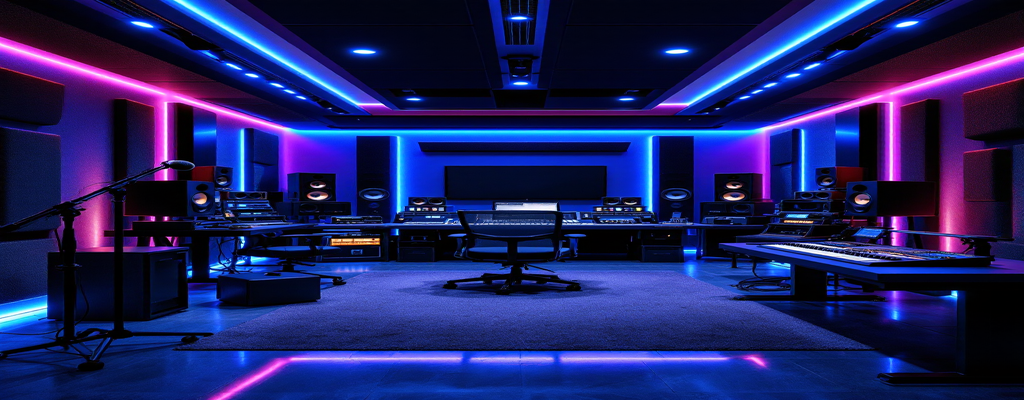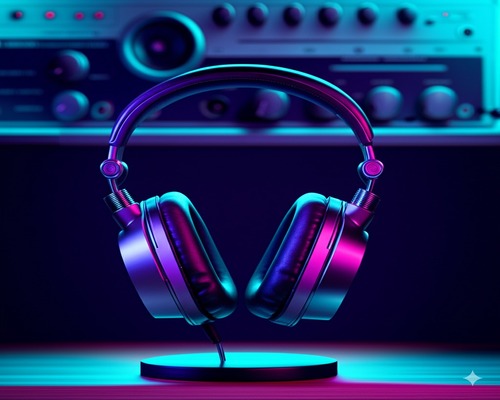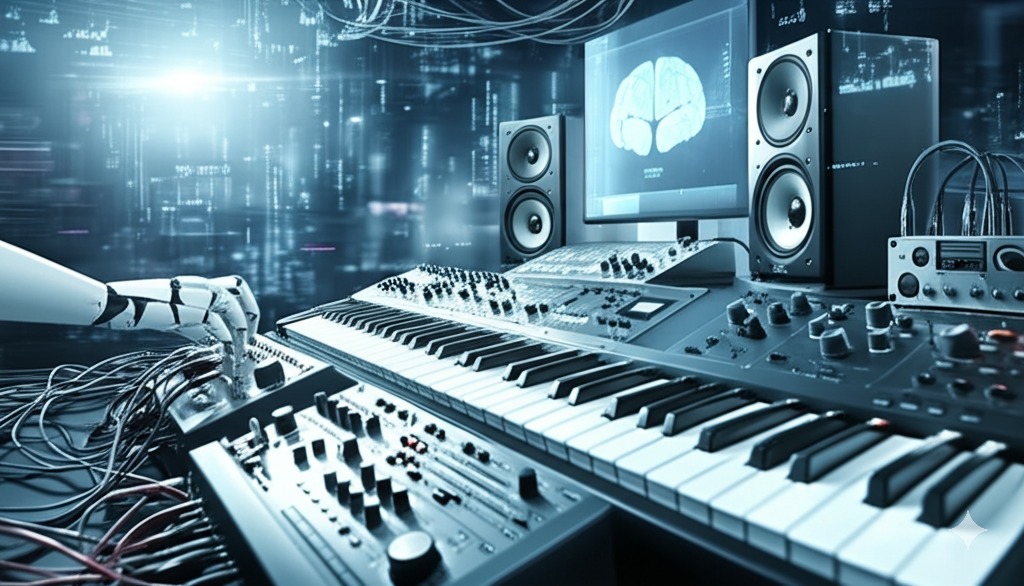
AI in ambient and experimental music is where technology gets weird in the best possible way. Unlike pop or classical, these genres already live at the edges of what we think music can be – and now AI is pushing those boundaries even further. From endless evolving soundscapes that never repeat to installations that react to your brainwaves, AI tools are helping artists create sounds and experiences that weren’t possible before.
What Is AI in Ambient and Experimental Music?
Let’s talk about what makes AI in ambient and experimental music so different from other genres. This isn’t about writing catchy hooks or following traditional structures – it’s about creating sonic environments, textures, and experiences that challenge how we think about sound itself.
Defining the Ambient and Experimental Genres
Before we dive into the AI stuff, let’s get clear on what we’re talking about:
- Ambient music focuses on atmosphere and mood over melody and rhythm
- It often creates a sense of space or environment through sound
- Experimental music deliberately breaks conventions and explores new sonic territory
- Both genres value discovery, surprise, and unusual sound combinations
Brian Eno, who basically invented ambient music, called it “as ignorable as it is interesting” – meaning you can have it in the background or really focus on it. AI turns out to be perfect for creating this kind of open-ended, evolving sound.
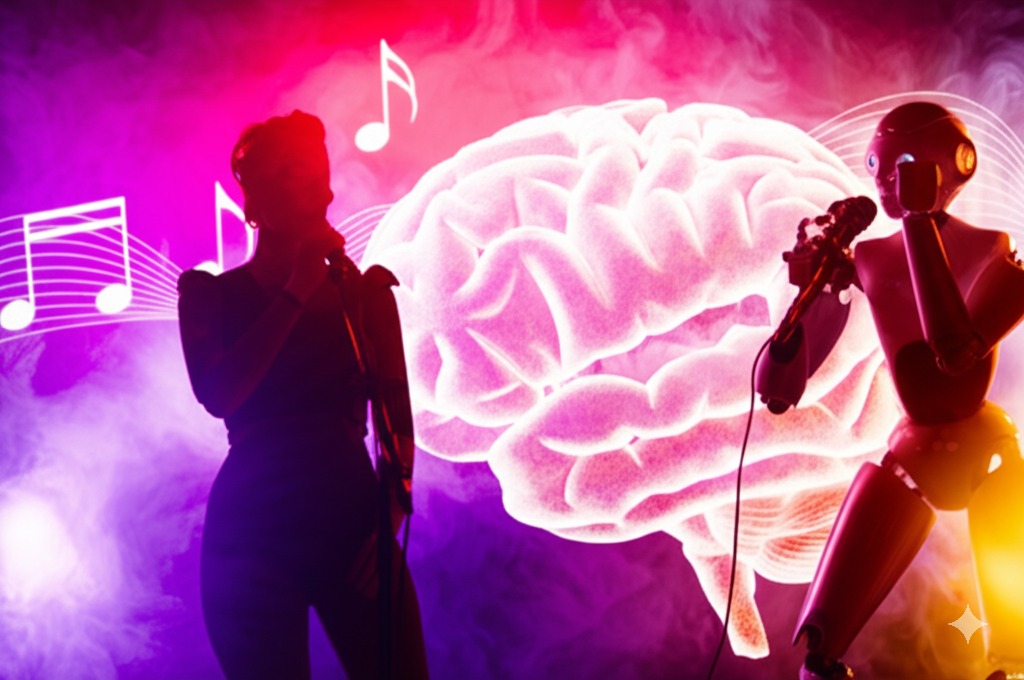
How AI Interprets Abstract Soundscapes
AI-generated ambient soundscapes work differently from AI in other music styles:
- Instead of learning chord progressions and melodies, AI analyzes textures and timbres
- Neural networks can identify patterns in seemingly random noise
- AI can generate endless variations without repeating exact sequences
- The focus is often on subtle evolution rather than dramatic changes
This makes ambient music AI tools particularly good at creating the slow-changing, immersive experiences that define the genre. The AI music by genre approach works especially well here because ambient and experimental music often have fewer “rules” to follow.
Generative Algorithms in Non-Linear Composition
Here’s where things get really interesting. Algorithmic composition in ambient music uses:
- Generative systems that create music that’s different every time
- Rules and probabilities rather than fixed sequences
- Feedback loops where the system responds to its own output
- Parameters that set general boundaries but allow for surprise
Unlike a pop song that’s the same every time you hear it, AI for experimental music creation often produces works that never repeat exactly – just like a natural environment never sounds exactly the same twice.
AI as a Creative Tool in Sound Design
Sound design is where AI in ambient and experimental music really shines. Let’s look at how it’s creating new sonic possibilities.
Soundscape Generation with Neural Networks
Neural audio synthesis takes sound design to new places:
- AI systems analyze thousands of sound samples to understand their characteristics
- They can then generate entirely new sounds that don’t exist in the real world
- Some models can morph between different sounds (like a waterfall gradually becoming a synthesizer)
- Others can create “impossible instruments” with hybrid characteristics
These tools help artists in the impact of AI in music by expanding what’s sonically possible beyond traditional instruments or synthesis methods.
AI for Evolving Textures and Slow-Build Atmospheres
One of the hallmarks of ambient music is how it gradually evolves over time. AI audio textures excel at this:
- Systems can generate subtle variations that unfold over minutes or even hours
- AI can maintain coherence while constantly introducing new elements
- Machine learning models create natural-sounding evolution without human intervention
- The results often have an organic quality that pure synthesis lacks
Brian Eno’s “Bloom: 2025” exemplifies this approach, using Google’s MusicLM to create weather-reactive installations where rain intensity morphs chord progressions in real-time.
Source: iMusician
Experimenting with Unusual Timbral Combinations
AI in ambient and experimental music loves to get weird with sound combinations:
- AI can blend characteristics of totally different sound sources
- It can discover combinations humans might never think to try
- Some systems analyze how different sounds complement each other
- Others deliberately seek out unusual or jarring juxtapositions
The artistic collective “Fungal Frequency” takes this to a fascinating extreme. They train AI on electrical signals from mycelium networks, essentially translating mushroom communication into ambient drones. Their MoMA PS1 exhibit let visitors “hear” fungal reactions to touch, creating a unique biological-digital sound experience.
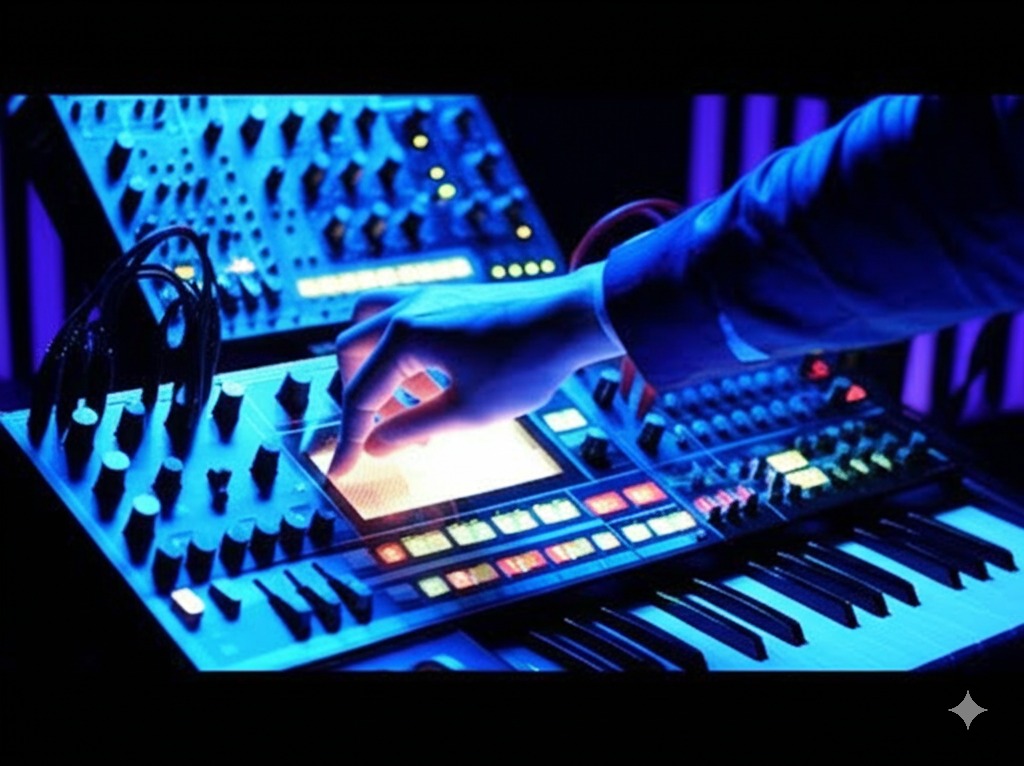
Human-AI Collaboration in Avant-Garde Music
The relationship between humans and machines is central to AI in ambient and experimental music.
Artists Using AI to Break Musical Conventions
Some of the most exciting work happens when innovative artists partner with AI:
- Holly Herndon’s “Proto” album features an AI voice trained on her vocal ensemble
- Actress (Darren Cunningham) uses AI to extend his electronic compositions
- Jlin collaborates with AI systems to create complex, evolving rhythmic landscapes
- Tim Hecker incorporates AI-processed sounds into his dense ambient works
These artists see AI in avant-garde music as a way to push beyond their own habits and preconceptions, using the machine to discover new creative territory.
Real-Time Generative Systems for Live Performance
Live performance gets particularly interesting with ambient generative systems:
- AI can respond to musician input in real-time
- Some systems adapt to the acoustic environment of the performance space
- Others analyze audience behavior and adjust accordingly
- Many create unrepeatable experiences unique to each performance
The NeuroSonics system exemplifies this approach by converting EEG brainwaves into modular synth patterns. Holly Herndon used this technology in her 2025 album “Proto-DSP,” creating music that literally translates brain activity into sound.
Improvisation with AI-Driven Sound Engines
Improvisation takes on new dimensions with AI collaborators:
- AI systems can respond to human input with unexpected suggestions
- Some maintain overall coherence while introducing surprising elements
- Others can analyze and extend a performer’s patterns in real-time
- The best systems feel like playing with a creative partner, not just a tool
Artists using AI tools for musicians in experimental contexts often describe the experience as a conversation rather than simply using an instrument.
AI-Driven Ambient Installations and Artworks
AI-generated ambient soundscapes aren’t just for headphones – they’re creating entire environments.
Interactive Sound Environments Powered by AI
Art installations using AI in ambient and experimental music create immersive experiences:
- Spaces where sound responds to visitor movement
- Environments that evolve based on time of day or weather
- Installations that develop personalities based on visitor interactions
- Systems that generate never-ending, ever-changing sonic landscapes
These installations blur the line between music, art, and environment, creating experiences that couldn’t exist without AI technology.
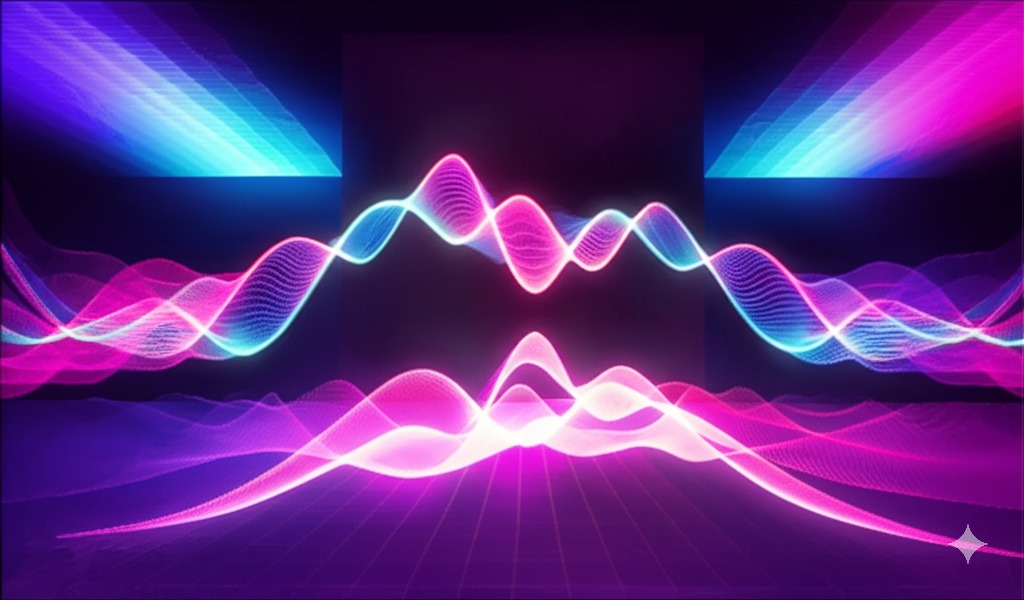
AI in Meditative and Therapeutic Audio Spaces
The calming, evolving nature of machine learning ambient music makes it perfect for wellness applications:
- AI generates personalized soundscapes for meditation
- Some systems adapt to biofeedback, creating a loop between body and sound
- Therapeutic environments use sound to influence mood and mental state
- Medical settings are exploring AI ambient sound for pain management and anxiety reduction
The endless variation possible with AI means these soundscapes avoid the fatigue that can come from hearing the same recorded track repeatedly.
Case Studies in Museums and Experimental Art Venues
AI-driven experimental music installations are appearing in prestigious venues:
- IRCAM’s 2024 “Inaudible Atmospheres” used GANs to generate ultrasonic sound between 19kHz-22kHz, originally to study rat behavior
- Experimental artist Arca later adapted this technique into a subsonic gallery piece
- The installation created physical sensations more than audible sound
- This expanded the definition of music beyond what humans can literally hear
Source: MusicCharts24
Meanwhile, a controversial installation at Berlin’s Berghain nightclub generated 7Hz infrasound that caused nausea in 12% of attendees, prompting new EU regulations on subharmonic public performances. This raises important questions about the physical effects of AI audio textures that push beyond traditional musical frequencies.
Benefits and Controversies Around AI in Ambient and Experimental Music
Like any technological shift, AI in ambient and experimental music brings both opportunities and challenges.
Expanding the Boundaries of Musical Imagination
The benefits of AI for experimental music creation include:
- Access to sonic possibilities beyond traditional instruments or synthesis
- Breaking free from human habits and preconceptions
- Creating truly endless music that evolves without repetition
- Discovering new approaches that human composers might never find
For many artists, the most exciting aspect is how AI helps them discover ideas they wouldn’t have thought of on their own.

The Debate Over Intent and Authorship
The experimental music community is actively debating:
- How much of an AI-produced piece can be claimed by the human artist
- Whether intentionality is essential to creating meaningful art
- If curation of AI outputs is itself a creative act
- How to properly credit the human programmers behind the AI tools
These questions are particularly relevant in experimental music, which has always questioned traditional notions of authorship and creation.
Is AI Making Music or Generating Noise?
The line between music and noise has always been blurry in experimental genres. AI adds new questions:
- Can a system with no understanding of human emotion create emotionally resonant work?
- Is structure necessary for something to be considered music?
- Does the lack of traditional human intent matter if the listener finds meaning?
- How do we evaluate work that has no clear reference points?
These philosophical questions make AI in ambient and experimental music a fascinating test case for thinking about art in the age of artificial intelligence.
The Future of AI in Ambient and Experimental Music
Where is this technology headed next? The possibilities are as boundless as the genres themselves.
Hyperadaptive AI Music for Personalized Environments
Future ambient music AI tools might create truly responsive environments:
- Music that adjusts to your heart rate, stress levels, and brain activity
- Soundscapes that complement specific activities or enhance specific moods
- Environments that learn your preferences over time
- Systems that create perfect sound for specific spaces based on acoustics
This approach could fundamentally change our relationship with musical environments, making them extensions of ourselves.

The Rise of AI as an Independent Experimental Artist
We’re starting to see AI systems positioned as artists in their own right:
- AI systems with distinct “personalities” and approaches
- Ongoing projects that evolve over months or years
- AI-driven works released under the AI’s name, not just as a human tool
- Critical evaluation of different AI systems as having different artistic merits
This raises fascinating questions about creativity and raises the bar for what we expect from AI music production.
Blending AI with Biofeedback and Neural Interfaces
The most sci-fi aspects of AI in ambient and experimental music involve direct biological connection:
- Music that responds directly to neural activity
- Compositions created through brain-computer interfaces
- Systems that create feedback loops between body and sound
- Experiences that blur the line between listener and creator
Early examples like the NeuroSonics system are just the beginning of this merging of biology and technology through sound.
FAQs – AI in Ambient and Experimental Music
Can AI truly innovate in ambient or experimental music?
Yes, and some would argue it’s particularly well-suited for these genres. AI-generated ambient soundscapes excel at creating unpredictable, non-linear sound patterns that are perfect for ambient and experimental music. The lack of conventional rules in these genres gives AI more freedom to discover truly novel approaches.
Are there any famous artists using AI in ambient music?
Absolutely. Brian Eno, who pioneered ambient music, has embraced AI tools in recent works like “Bloom: 2025.” Other notable artists include Holly Herndon, who develops her own AI voice models; Actress (Darren Cunningham), who uses AI to extend his compositional process; and Tim Hecker, who incorporates AI-processed sounds into his atmospheric works.
What AI tools are best for experimental sound design?
For artists interested in how AI creates ambient and experimental soundscapes, several tools stand out. Google Magenta offers various audio models, RAVE (DDSP) creates powerful audio synthesis, and granular synthesis plugins with AI support like Portal by Output are popular. For more accessible options, tools like Endel and Soundscape Generator offer simpler interfaces for generative sound design.
Can AI compose music without a melody or rhythm?
This is actually where many AI systems excel. Ambient compositions often focus on texture, timbre, and atmosphere rather than traditional elements like melody and rhythm. AI can model these aspects very effectively using unsupervised learning to understand how sounds evolve and interact. This makes AI audio textures particularly successful in ambient contexts.
Is AI-generated ambient music used commercially?
Yes, increasingly so. AI-generated ambient soundscapes are commonly used in meditation apps, wellness platforms, and corporate sound environments. Video games use AI-generated ambient audio for backgrounds that don’t become repetitive during long play sessions. Even retail and hospitality spaces are beginning to use adaptive AI soundscapes to create specific atmospheric moods.
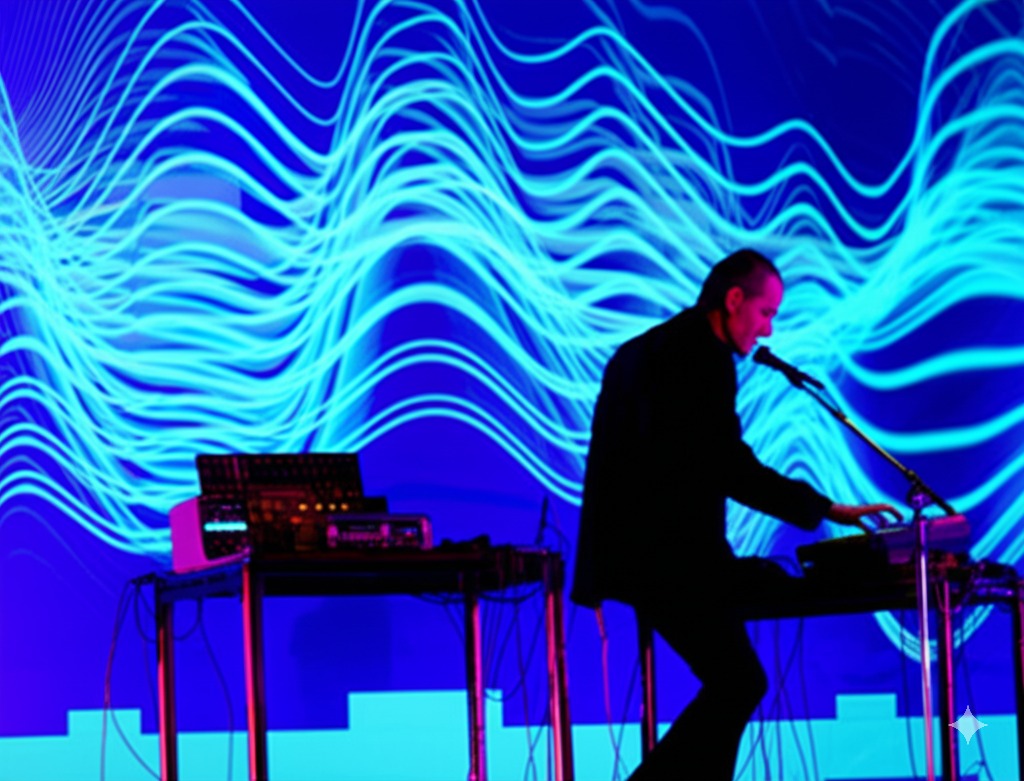
Conclusion about AI in Ambient and Experimental Music
AI in ambient and experimental music represents one of the most natural and fruitful collaborations between humans and machines in the creative arts. These genres have always been about exploration, discovery, and pushing boundaries – exactly what AI does best.
As the technology evolves, we’re likely to see even more fascinating developments, from music that responds directly to our physical states to compositions that exist as living, evolving entities rather than fixed recordings. The partnership between human creativity and machine capabilities is opening sonic worlds that neither could access alone.
Whether you’re a longtime fan of experimental sounds or just curious about the outer edges of what music can be, the fusion of AI and ambient/experimental music offers a fascinating glimpse of how technology can expand our sensory and artistic horizons. The static has never sounded so interesting.
